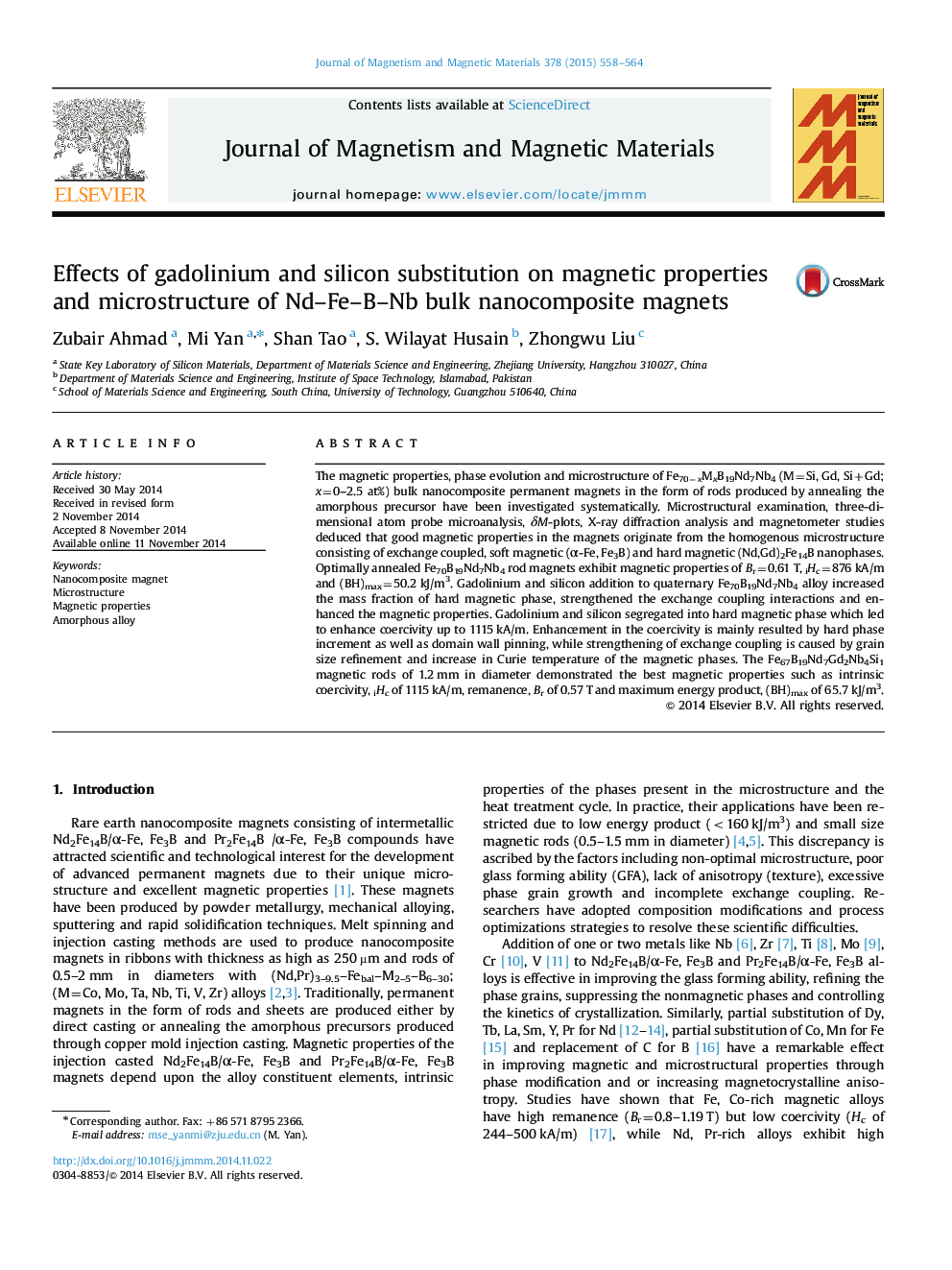| Article ID | Journal | Published Year | Pages | File Type |
|---|---|---|---|---|
| 1799357 | Journal of Magnetism and Magnetic Materials | 2015 | 7 Pages |
Abstract
The magnetic properties, phase evolution and microstructure of Fe70âxMxB19Nd7Nb4 (M=Si, Gd, Si+Gd; x=0-2.5 at%) bulk nanocomposite permanent magnets in the form of rods produced by annealing the amorphous precursor have been investigated systematically. Microstructural examination, three-dimensional atom probe microanalysis, δM-plots, X-ray diffraction analysis and magnetometer studies deduced that good magnetic properties in the magnets originate from the homogenous microstructure consisting of exchange coupled, soft magnetic (α-Fe, Fe3B) and hard magnetic (Nd,Gd)2Fe14B nanophases. Optimally annealed Fe70B19Nd7Nb4 rod magnets exhibit magnetic properties of Br=0.61 T, iHc=876 kA/m and (BH)max=50.2 kJ/m3. Gadolinium and silicon addition to quaternary Fe70B19Nd7Nb4 alloy increased the mass fraction of hard magnetic phase, strengthened the exchange coupling interactions and enhanced the magnetic properties. Gadolinium and silicon segregated into hard magnetic phase which led to enhance coercivity up to 1115 kA/m. Enhancement in the coercivity is mainly resulted by hard phase increment as well as domain wall pinning, while strengthening of exchange coupling is caused by grain size refinement and increase in Curie temperature of the magnetic phases. The Fe67B19Nd7Gd2Nb4Si1 magnetic rods of 1.2 mm in diameter demonstrated the best magnetic properties such as intrinsic coercivity, iHc of 1115 kA/m, remanence, Br of 0.57 T and maximum energy product, (BH)max of 65.7 kJ/m3.
Related Topics
Physical Sciences and Engineering
Physics and Astronomy
Condensed Matter Physics
Authors
Zubair Ahmad, Mi Yan, Shan Tao, S. Wilayat Husain, Zhongwu Liu,
